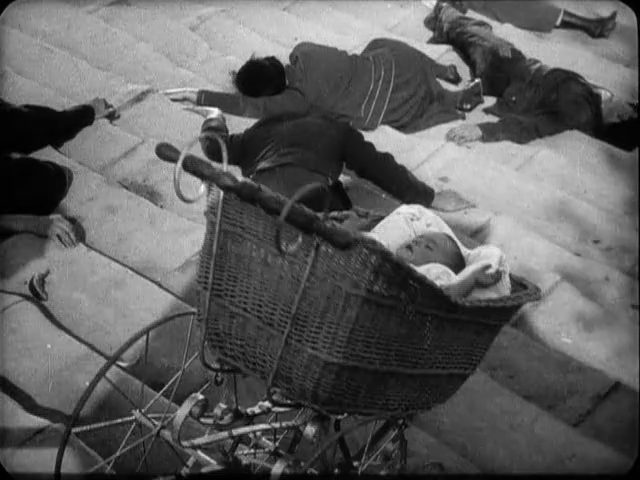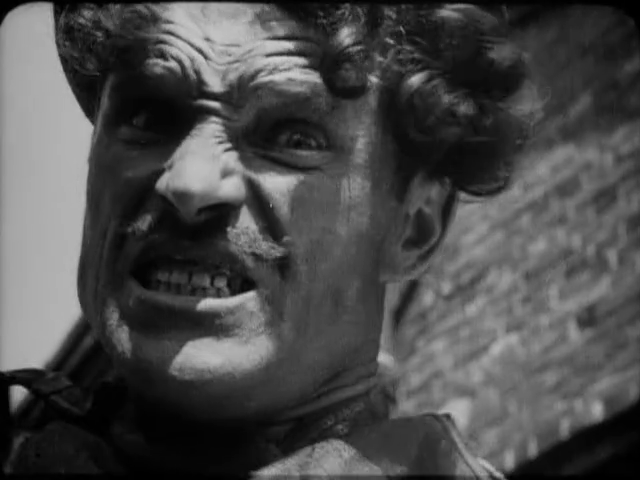The Battleship Potemkin (1925)
I first thought The Battleship Potemkin (1925) would be a boring film – because of my prejudice: usually a film acquired a lot of praises on its techniques would be boring somehow. However the more I look into it, I found it more interesting and therefore I am going to spend a little bit of time discuss about it.
Thanks to Eisenstein’s montage. Before I go ahead and talk about a few scenes in the film, let me use a little bit space to praise Eisenstein’s montage.
Eisenstein focused on conflict and collision, especially a shot and its successor, his notion of dialectic montage, which operated according to Marxist dialectic. He applied the dialectic approach on film editing as he juxtapositions a shot (the thesis) with another shot (its antithesis), that produces a new phenomenon (the synthesis), which is not just the sum of the shots but a whole new idea or impression perceived by the audience. This synthesis then becomes the thesis in a continuous montage sequence. Therefore, meanings are acquired by interaction of shots. Shots in a montage sequence may be visually opposing in linear directions, planes, volumes, tonal/lighting, tempo, rhythm, ideology, etc., or a combination of more than one conflicting aspect.
In The Battleship Potemkin, Eisenstein produced a tense and violent rhythm with this principle of dialectic montage. Moreover, he passed on a particular perception of history to the audience through his way of editing. Overall the collision approach itself attempts to represent the conflict and collision of history itself, at the same time the technique applied to individual scenes enforce certain emotional focus and response of the audience. His editing technique serves as psychological stimulation rather than a narrative device, allowing him to deliver his political message through emotional sensation to the audience.
Now let me illustrate a few montage sequences in the film.
In Act I “Men and Maggots”, after a group of sailors refused to eat the maggot-ridden piece of meat, there is a scene of the three sailors washing the dishes. One of them suddenly realises that the plate he is washing has the hypocritical inscription “Give us this day our daily bread”. In the next four seconds a montage sequence of nine separate but overlapping shots shows the sailor smashes the plate twice, the first from his right and second from his left, emphasising the violence and angriness of the sailor’s action.








Act II "Drama on the Quarterdeck", there is a montage sequence of objects on the ship after the sailors under the tarpaulin kneel down. First is the priest tapping his palm with his crucifix, then the lifebuoy with the words “Prince Potemkin Tavrichesky”, then the ship prow with Czarist eagle, lastly a bugler with a bugle in his hand. This montage sequence is Eisenstein’s expression of emotional time, which extends and suspends the time of thought of Vakulinchuk and the marine squad, and represents the feeling of the elongated fearful moment of the sailors.
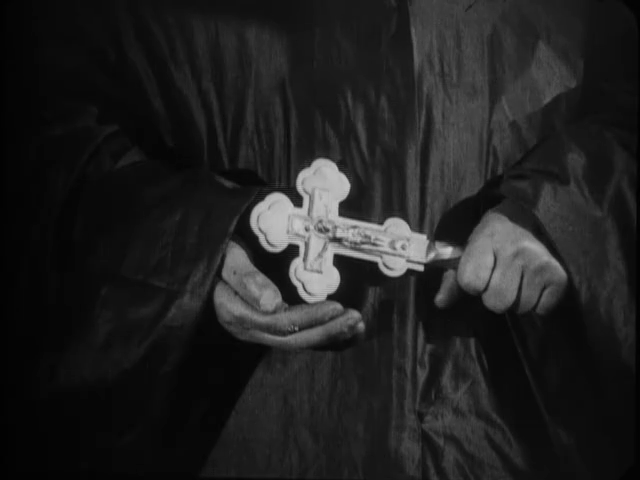



The opening of Act III “An Appeal from the Dead” is the famous “fog montage” sequence. Here Eisenstein puts together a sequence of shots of various aspects of the habour just before dawn: sailing vessels, steamships, gull-covered buoy, surface of the sea, dockside cranes, Vakulinchuk’s tent, etc.. The sequence is an example of “tonal montage”, as Eisenstein suggested. Each shot in the sequence increases luminosity progressively as the sun rise and gradually disperses the fog. It depicts a long night has passed and finally the dawn has been broken, the death of Vakulinchuk has awaken the anger and support of mutiny against czarism.




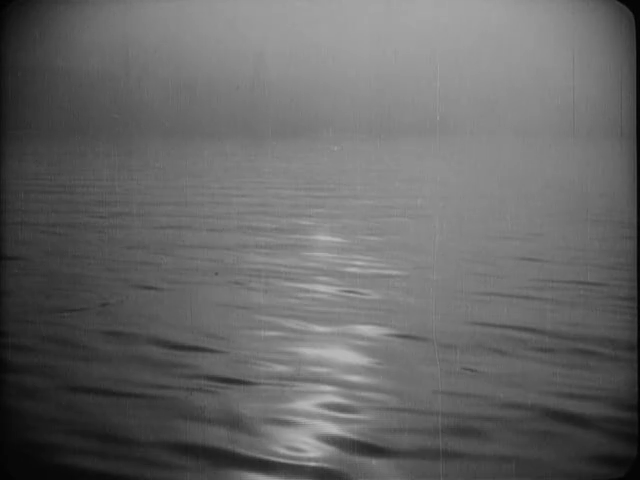



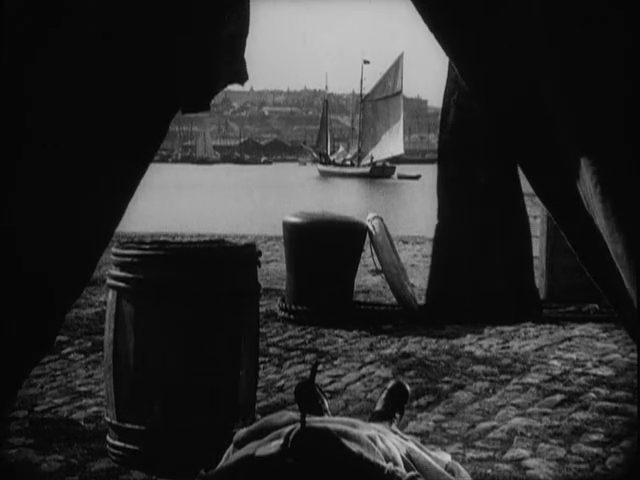
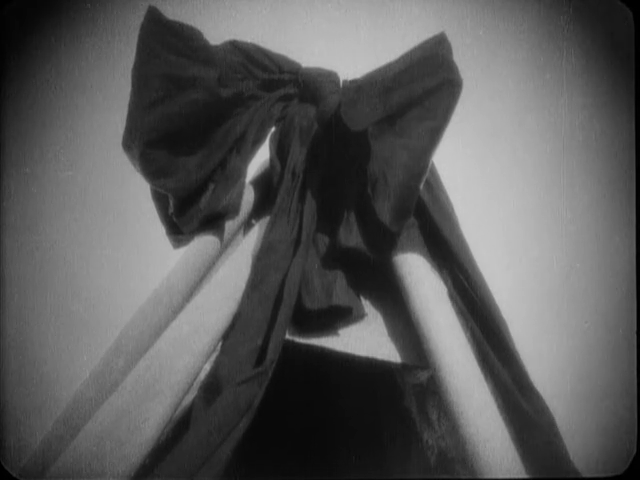


Act IV is the famous “The Odessa Steps” that depicts a massacre of the Odessa citizens by czarist troops on the steps. The collisions of movements and dramatic graphic patterns in this sequence of shots bring audience huge psychological and emotional impact. The sequence begins with the intertitle “Suddenly”, instantly followed by a few close up shots of the dark hair of a woman in white with her mouth open who moves so violently, abruptly shocks the audience. These close up shots are followed by several shots with citizens run down the steps generally from left to right in a chaotic way. The source of terror is revealed in a following shot from the reverse angle, the top of the steps, showing a horizontal line of troops in white carrying riffles coming after the people on the steps. Another long shot from the bottom of the steps of people running down is inserted here.
Throughout the sequence there are several different figures are isolated, one of them is the woman who run with her son. As they are fleeing, her son falls and is trampled by the crowed and died. She gathers his body and walks up against the crowd from right to left across the screen towards the troops with her dead son in her arms. Meanwhile a woman in pince-nez decides to go up to the troops as well. All these individual actions are shown in shots in between shots of people running down the steps. Now two people are moving up, colliding with the direction of the crowd and the troops, while the disorganised and chaotic fashion of the citizens running downwards is colliding with the organised, orderly descending line of troops coming from the top of the steps.
The most famous editing sequence in this act is around the young woman and her baby carriage. She is first shown afraid to push the carriage down the steps, then the troops march down and she is shot. Her falls is illustrated in several overlapping cuts. The montage returns to her every few seconds as she sinks lower to the ground. The successive shot is noticeably discontinue from the previous one, as her position is always more upright than her position at the end of the last shot. Her fall is stretched and repeated by montage editing. Eisenstein again replace the actual linear time with the emotional time, to emphasise the violent and disruptive action of the czarist troops and the powerless and innocence (which is symbolised by the baby carriage) of the people in front of the audience.




As she falls to the ground she also loses control and protection power to her carriage and pushes it offscreen, down the steps. Then Eisenstein intercuts between the baby carriage rolling down the steps, the woman in pince-nez, the student with glasses and the crowd slashing by the Cossack at the bottom of the steps rapidly. Towards the end of the sequence the student screams as the carriage overturns, and without a clear ending for the carriage shown on screen it quickly cuts to a Cossack slashes his saber several times in four discontinuous close shots, which then rapidly cut to a close up shot of the woman in pince-nez whose shattered glasses blood spurts from a slashed and blinded eye.
Last but not least, the famous three shots montage sequence of a sculptured stone lion. The brief sequence consist of three shots of separate stone lions all posed differently in different position: the first is asleep, the second is awakened, and the third is standing up. With the understand of the Kuleshov’s effect, Eisenstein put together the three shots to give an impression to the audience of a sleeping lion awakening and rising up, symbolising Russian people are awakened and committed to fight against Czar.



Now you see how Eisenstein's editing technique has brought revolutionary energy to The Battleship Potemkin, and why the film is a masterpiece of all time!


